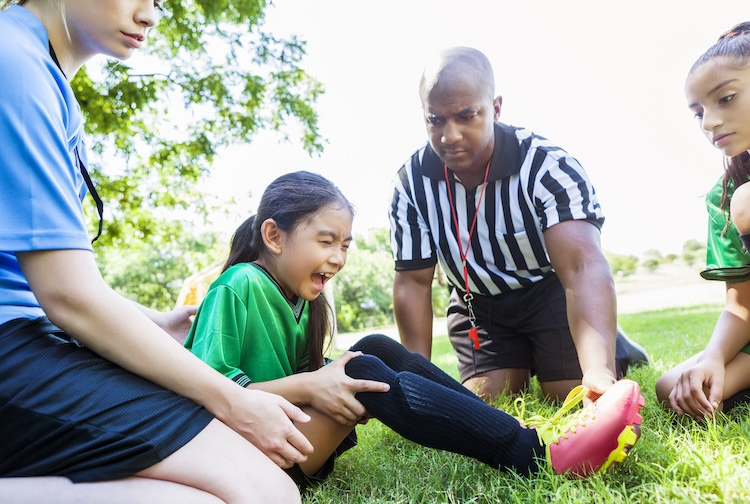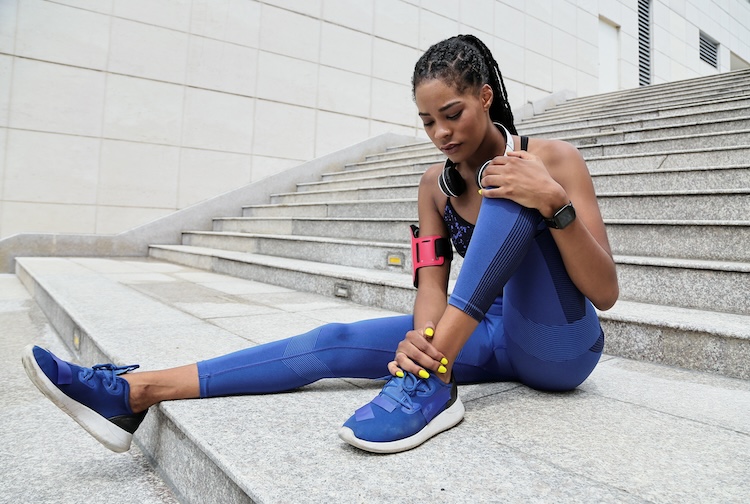
5 common youth sports injuries
A pediatric orthopaedic surgeon explains the reasons and recovery processes for athletic injuries in kids.
March 12, 2024 Many common sports injuries can be prevented with the right precautions. (Getty Images)
Many common sports injuries can be prevented with the right precautions. (Getty Images)
By Kate Marino
Along with fun and friendly competition in sports comes the risk for injury. According to research by the Centers for Disease Control and Prevention, about half of sports and recreation-related injuries send children and young adults to the doctor’s office or a health clinic.
“It’s becoming increasingly common for kids to specialize in specific sports at young ages, which can stress muscles, bones and joints and set them up for injury,” said Chester Sharps, M.D., an orthopaedic surgeon at Children’s Hospital of Richmond at VCU. “Then of course there are the sprains, tears or breaks that occur from a haphazard twist or fall that can’t always be prevented. No matter the cause of injury, kids require specialized diagnosis and treatment so they can heal and continue healthy growth and development moving forward.”
As young athletes prepare for another season, Sharps shares some of the common sports injuries seen by pediatric orthopaedic specialists at CHoR.
Anterior cruciate ligament – or ACL – tears
The ACL connects the femur (thigh bone) and tibia (shin bone) in the knee, providing support and stability. ACL tears frequently occur when suddenly turning and changing direction, a common movement in basketball, soccer, tennis and other sports. Your child may say they heard or felt a pop and they’re having trouble supporting their weight. There’s usually immediate pain, then swelling within several hours.
It’s normal for an ACL tear to take 6-9 months to heal. Less severe tears can often be treated with rest, bracing and physical therapy. More severe injuries may require surgery. In either case, it’s important to follow the medical team’s instructions for gradually returning to activities.
Ankle sprains
Ankle sprains usually happen when the ankle twists or the foot rolls onto its side, causing the ligaments that support the ankle joint to stretch or tear. It can happen when running or jumping, especially on uneven surfaces. Swelling and pain usually occur on the outside of the ankle within hours of the injury. You may notice bruising within a few days too.
For severe pain, see a medical provider. In other cases, you can use the RICE (rest, ice, compression, elevation) approach at home to see if symptoms improve. Ice should be wrapped in a towel/cloth to protect the skin and used for 15-20 minutes at a time. If swelling and pain persist, see a doctor. They’ll be able to determine how bad the injury is and help your child safely restore motion and strength over a period of 4-6 weeks.
Broken bones
Broken bones typically occur as the result of a fall or collision. Sometimes it’s obvious that a bone is broken, but not always. A snap or grinding sound at the time of injury can signal a fracture. Your child should be seen by a medical provider ASAP if the body part looks deformed, there’s a break in the skin and bone is showing, they can’t bear weight or use the extremity 15 minutes after the injury occurred, or their pain is uncontrollable.
X-rays will help identify how severe the break is and if surgery is needed. If the bones have shifted out of place, they’ll need to be repositioned – a procedure called a reduction. It’s likely your child will need a cast to immobilize and protect the bone while it heals, which can take about 6 weeks or more depending on the size of the bone and type of break.
Growth plate injuries
Growth plates are soft cartilage at the end of the long bones (such as in the arms, legs and fingers) that are replaced by stronger bone as kids finish growing. Growth plates are weaker and more susceptible to injury than the rest of the bone.
Since growth plates aren’t solid bone, a fracture may not show up on a standard x-ray, but doctors can look for gaps between the middle and end of the bone and/or order other imaging tests to get a clearer look. Most growth plate injuries heal with no complications. Sometimes, though, fractures in the growth plates can cause the bone to be crooked or too long/short later. That’s why it’s best to have an evaluation with a pediatric specialist for any concerns of growth plate injuries.
Overuse injuries
Overuse injuries such as shin splints, tendonitis and stress fractures often build slowly from repetitive actions. Elbow injuries in baseball players and shoulder injuries in swimmers are some of the most common, but overuse injuries can happen in other sports too. Kids’ bones, muscles and ligaments aren’t fully developed, which makes them more prone to overuse injuries than adults.
Pain and inflammation are usually the first signs overuse injuries. When they occur, it’s important for kids to rest and allow for complete healing to avoid further damage. If your child has pain, swelling, limping or other signs of injury, have them evaluated by a medical provider. Proper stretching, rest (at least 1-2 days a week), equipment and technique are important in preventing overuse injuries. It’s also helpful for kids – especially those under age 12 – to play a variety of sports to improve strength without the repeated stress on one part of the body.
Experts at CHoR encourage kids to play and have fun. When it comes to sports, many injuries can be prevented with the right precautions. For those that can’t, CHoR’s orthopaedic team is here to help kids heal and get back in the game safely – often with same-day appointment availability Monday - Friday.



